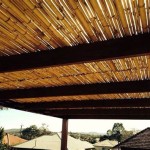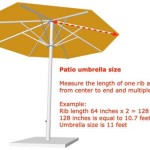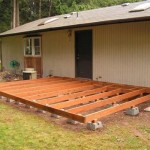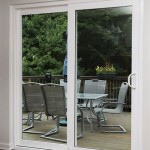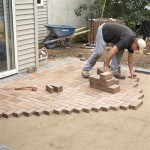Resin Wicker Patio Furniture Repair: A Comprehensive Guide
Resin wicker patio furniture, prized for its durability and aesthetic appeal, frequently adorns outdoor living spaces. Constructed from synthetic resin fibers woven to mimic natural wicker, this furniture offers resistance to weather elements such as rain, sun, and humidity, making it a preferred choice for outdoor use. However, despite its resilient nature, resin wicker is susceptible to damage over time. Exposure to extreme temperatures, prolonged sunlight, and physical stress can lead to cracking, unraveling, and structural weakening. This article provides a comprehensive guide to repairing resin wicker patio furniture, covering common issues, necessary tools and materials, and step-by-step repair procedures.
Understanding the nature of resin wicker is essential before embarking on repair efforts. Unlike natural wicker, which is derived from plant materials, resin wicker is a synthetic product, typically made from polyethylene or polyvinyl chloride (PVC). This composition contributes to its weather resistance but also necessitates specific repair techniques. The ability to identify the type of damage and select the appropriate repair method will significantly impact the longevity and appearance of the restored furniture.
Identifying Common Resin Wicker Damage
Before attempting any repair, a thorough assessment of the damage is crucial. Common types of damage to resin wicker patio furniture include:
Cracked or Broken Strands: This is perhaps the most frequent issue. Sunlight, temperature fluctuations, and physical impact can cause the resin strands to become brittle and crack or break. These cracks may be small and superficial or large and structural, affecting the integrity of the woven pattern.
Unraveling: Over time, the woven pattern of the resin wicker can begin to unravel, particularly at the edges or where the strands are secured to the frame. This unraveling can compromise the furniture's aesthetic appeal and structural stability.
Fading: Prolonged exposure to sunlight can cause the resin wicker to fade, losing its original color. While fading does not directly affect the furniture's structural integrity, it can detract from its overall appearance.
Frame Damage: The underlying frame, typically made of aluminum or steel, can also be susceptible to damage. Rust, corrosion, or bending can compromise the structural support of the furniture.
Sagging: Over time, the seating surface, which is usually made from woven resin wicker, can begin to sag, making the furniture less comfortable and supportive.
Accurately identifying the type and extent of damage will inform the selection of the appropriate repair materials and techniques. A small crack, for instance, may only require adhesive, while more extensive unraveling might necessitate the replacement of entire sections of wicker.
Tools and Materials Required for Resin Wicker Repair
Successful resin wicker repair requires a selection of appropriate tools and materials. The specific items needed will vary depending on the nature and extent of the damage, but the following list provides a comprehensive overview:
Replacement Resin Wicker: Matching the original color, texture, and width of the resin wicker is critical for a seamless repair. Consider purchasing replacement wicker from the furniture manufacturer or a specialized supplier to ensure a close match. If an exact match is unavailable, choose a color that complements the existing wicker or consider replacing all the wicker on a given surface for a more uniform appearance.
Adhesive: A strong, weather-resistant adhesive is essential for bonding broken strands and securing loose ends. Epoxy adhesives and specialized plastic bonding agents are suitable choices. Ensure the adhesive is compatible with the type of resin used in the wicker construction.
Utility Knife or Scissors: These tools are necessary for cutting the replacement wicker to the appropriate length and trimming any loose ends. A sharp utility knife is particularly useful for making precise cuts.
Needle-Nose Pliers: These pliers are helpful for manipulating the resin wicker strands and weaving them into place. They are particularly useful for reaching tight spaces and securing the ends of the wicker.
Sandpaper: Fine-grit sandpaper can be used to smooth rough edges and prepare surfaces for bonding. It is particularly useful for repairing cracks and breaks.
Clamps or Weights: Clamps or weights can be used to hold the repaired sections of wicker in place while the adhesive dries. This ensures a strong and durable bond.
Gloves: Wearing gloves protects your hands from adhesive and debris during the repair process.
Safety Glasses: Wearing safety glasses protects your eyes from debris and potential splashes of adhesive.
Color-Matching Paint or Stain (Optional): If fading is an issue, color-matching paint or stain can be used to restore the original color of the resin wicker. Choose a product specifically designed for outdoor use and compatible with the resin material.
Rust Remover and Primer (For Frame Repair): If the frame is damaged by rust, rust remover and primer will be needed to prepare the surface for painting.
Having these essential tools and materials readily available will streamline the repair process and ensure a successful outcome.
Step-by-Step Repair Procedures for Common Issues
Once the damage has been assessed and the necessary tools and materials have been gathered, the repair process can begin. The following sections outline step-by-step procedures for addressing common resin wicker damage:
Repairing Cracked or Broken Strands:
- Clean the area: Use a mild detergent and water to clean the area around the crack or break. Allow the area to dry completely.
- Prepare the surfaces: If the edges of the crack are rough, use fine-grit sandpaper to smooth them.
- Apply adhesive: Apply a small amount of adhesive to both edges of the crack or break.
- Align the strands: Carefully align the broken strands, ensuring that they are properly positioned.
- Clamp or weigh the repair: Use clamps or weights to hold the strands in place while the adhesive dries. Follow the adhesive manufacturer's instructions for drying time.
- Remove excess adhesive: Once the adhesive is dry, carefully remove any excess adhesive with a utility knife or cotton swab.
For more significant breaks, consider using a small piece of replacement wicker to reinforce the repair. Overlap the replacement wicker slightly over the broken ends and secure it with adhesive.
Repairing Unraveling:
- Identify the source of the unraveling: Determine where the unraveling started and identify any loose ends.
- Secure loose ends: Use adhesive to secure any loose ends to prevent further unraveling.
- Re-weave the strands: Carefully re-weave the strands back into their original pattern. Use needle-nose pliers to manipulate the strands and secure them in place.
- Secure the woven pattern: Once the unraveling has been repaired, use adhesive to secure the woven pattern and prevent it from unraveling again.
- Trim excess wicker: Trim any excess wicker with a utility knife or scissors.
If the unraveling is extensive, it may be necessary to replace entire sections of wicker. To do this, carefully cut out the damaged section and weave in a new section of replacement wicker, securing it with adhesive.
Addressing Fading:
- Clean the furniture: Thoroughly clean the furniture with a mild detergent and water. Allow it to dry completely.
- Prepare the surface: Lightly sand the surface of the resin wicker to create a better bond for the paint or stain.
- Apply paint or stain: Apply a thin, even coat of color-matching paint or stain to the faded areas. Use a brush or sprayer to apply the paint or stain.
- Allow to dry: Allow the paint or stain to dry completely according to the manufacturer's instructions.
- Apply a second coat (if necessary): If necessary, apply a second coat of paint or stain to achieve the desired color.
Ensure the paint or stain is specifically designed for outdoor use and is compatible with the resin material.
Repairing Frame Damage:
- Remove rust (if applicable): If the frame is rusted, use a rust remover to remove the rust. Follow the manufacturer's instructions for application and removal.
- Prepare the surface: Sand the surface of the frame to create a smooth surface for painting.
- Apply primer: Apply a coat of rust-resistant primer to the frame. Allow it to dry completely.
- Apply paint: Apply a coat of outdoor paint to the frame. Choose a color that matches the original frame color or complements the resin wicker.
- Allow to dry: Allow the paint to dry completely according to the manufacturer's instructions.
For bent or broken frame components, consider seeking professional repair or replacement. Welding or fabricating new frame sections may be necessary to restore the structural integrity of the furniture.
Addressing Sagging:
Sagging in resin wicker patio furniture is often caused by stretching of the woven material over time. While completely eliminating sagging can be difficult, the following steps can help to improve the situation:
- Inspect the frame: Ensure the frame supporting the wicker is structurally sound. Repair any damage to the frame before addressing the sagging.
- Tighten the wicker (if possible): Some resin wicker furniture designs allow for tightening of the woven strands. Look for adjustable fasteners or tensioning mechanisms that can be used to tighten the wicker.
- Add support underneath: Consider adding additional support underneath the sagging area. This could involve installing additional cross-braces or a solid panel underneath the wicker.
- Replace the wicker (if necessary): If the sagging is severe and cannot be remedied by tightening or adding support, replacing the entire section of wicker may be necessary. This involves removing the old wicker and weaving in a new section, as described in the "Repairing Unraveling" section.
By following these step-by-step procedures, individuals can effectively repair common types of damage to resin wicker patio furniture, extending its lifespan and maintaining its appearance.

How To Repair Rattan Wicker Furniture Tools And Tutorial Rattanyard

Wicker Furniture Repair Guide Jessica Welling Interiors

Resin Wicker Patio Furniture Unraveling Hometalk

How To Repair Resin Wicker Chairs Using Glue Gun Atc Furniture 2024

Wicker Furniture Repair Guide Jessica Welling Interiors

How To Repair And Re Wicker Furniture Patio Ions

Fix Rattan Garden Furniture Resin Wicker Repair Outdoor

Wicker Furniture Repair Guide Jessica Welling Interiors

How To Fix The L Off Broken Weaving Of Chair

How To Repair Your Resin Wicker Outdoor Furniture Doityourself Com

